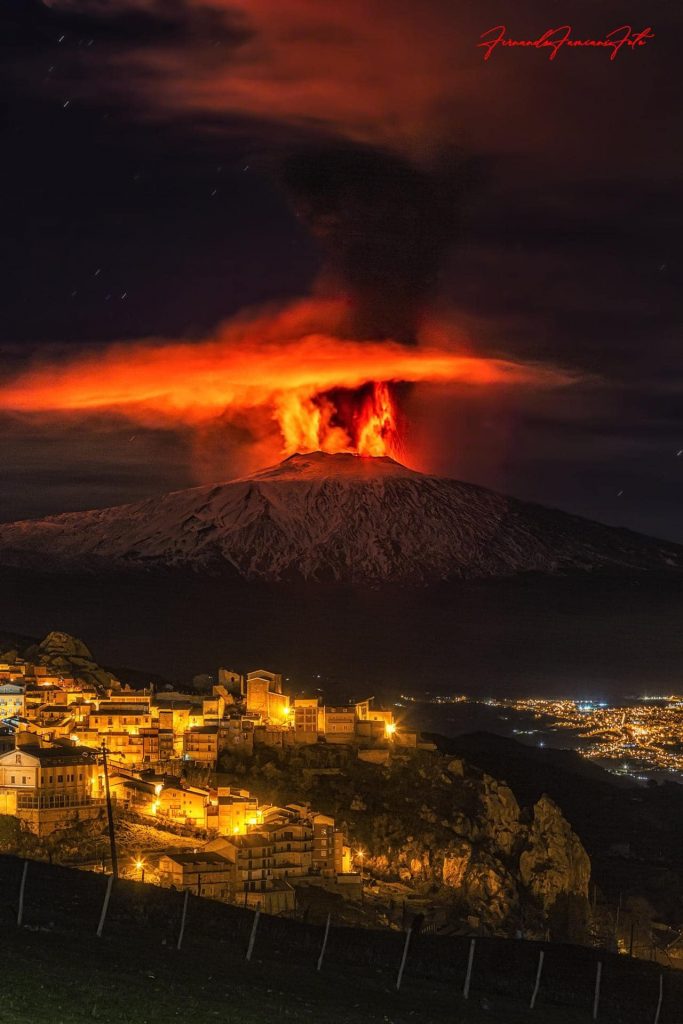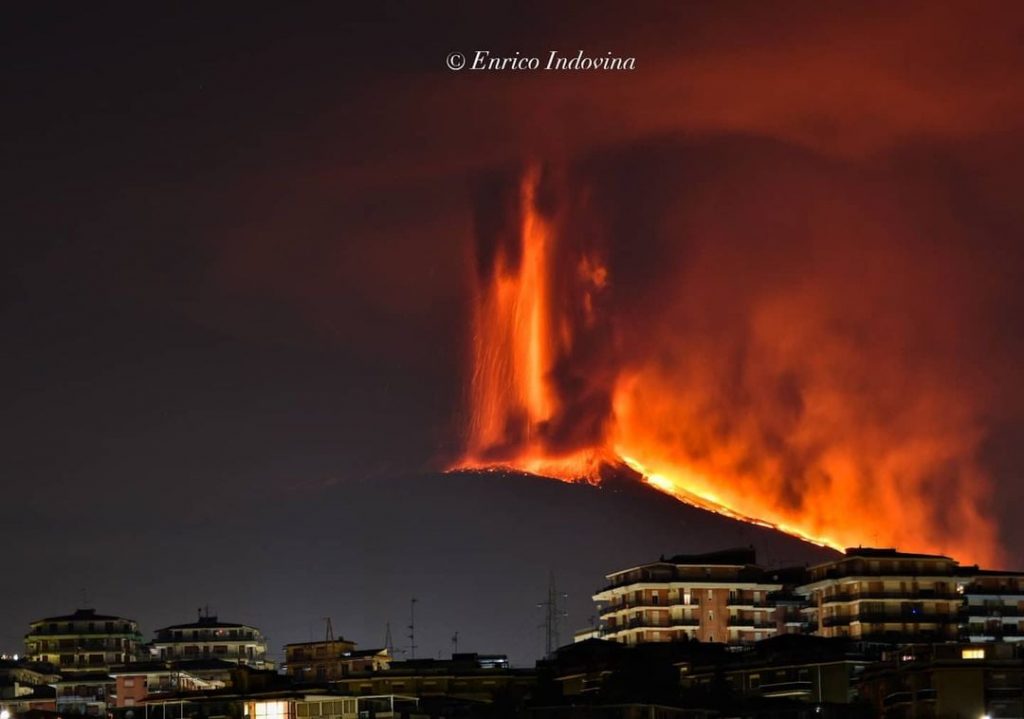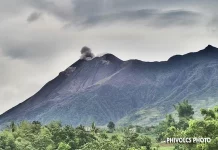Last night’s eruptive episode of tall lava fountains, known as paroxysm, turned out to be one of the most impressive and powerful in recent years. Not only did it produce higher fire fountains than usually, but also it lasted longer than most other paroxysms.

Around 10:30 p.m. local time, volcanic tremor and strombolian activity from the New SE crater began to increase drastically. Half an hour later, a first lava flow started to descend from the eastern summit vent of the crater, and activity continued to increase, soon forming fountains of a few hundred meters tall.
However, instead of peaking (and decreasing) very soon, activity continued to increase and first reached its climax at around 00:30 this morning, with fire fountains reaching the incredible heights of 800-1000 m!
Thanks to the near-absence of wind, a tall eruption column of over 10 km height formed with a circular umbrella cloud at the boundary between troposphere and stratosphere.
The eruption ended abruptly at 2 a.m., thus having produced sustained lava fountains for almost 3 hours!
Here a time-lapse video of the eruption:
The National Institute of Geophysics and Volcanology (INGV Catania) reported that during the eruption, at least 3 vents of the New SE crater were active.
The first lava flow from the so-called saddle vent descended to the southwest towards the Torre del Filosofo area, but eventually only reached a few hundred meters length.
Most lava was directed into a more voluminous flow traveling east into the Valle del Bove, where it reached a length of 3.5-4 km and stopped in similar areas as the ones from the previous paroxysms, at elevations between 1700-1800 m.
The eruptive activity had dropped already, but the New SE crater reactivated itself in a series of approx. 20 very violent explosions between 04:30-05:15 local time, which launched incandescent bombs beyond the base of the cone.
After 05:15, no more eruptive activity was observed at the New SE crater, while mild strombolian activity is continuing from the other summit vents (Bocca Nuova, Voragine).
It will be interesting to see whether Etna continues its current rhythmic pattern of paroxysms every roughly 35 hours. If so, the 5th of the current series should occur around noon tomorrow…
4th eruption in 4 days

The current, remarkably cyclic occurrence of these short, but very violent lava fountain phases at near-perfectly regular intervals is certainly an extraordinary and rare event, but has been observed at Etna several times in the past, such as in 2000 and 2012-13. Intervals between paroxysms ranging from 12 hours or less to several days.
What causes this regularity exactly is not fully understood, but the cyclic behavior at the surface is certainly linked to a combination of processes deeper below, which govern the rise of fresh, gas-rich magma from deeper reservoirs, capable to produce fountains when erupted at the surface.
This hotter magma obviously rises in separate batches, like large bubbles from a leak, at regular intervals as opposed to a more or less constant flow of magma. The latter, however, is a more common type of behavior, resulting in prolonged phases of activity at moderate levels, much as had been observed for weeks and months in a row during the past few years.
This difference is also reflected by the tremor amplitude: while extreme during the short paroxysms, it has been much lower during the intervals as during the weeks before, where activity fluctuated around an intermediate average value.
In other words, right now, Etna seems to be in a different state of transporting magma from its reservoirs to the surface, one characterized by generally very low rates of flux interrupted by short, extreme bursts of activity when individual batches make their way upwards.
How long the current pattern will last and where it might lead to, can only be guessed. More on Volcano Discovery.
To get more in-deep information I recommend Q-Files. Quick the image below!

Now subscribe to this blog to get more amazing news curated just for you right in your inbox on a daily basis (here an example of our new newsletter).
You can also follow us on Facebook and/ or Twitter. And, by the way you can also make a donation through Paypal. Thank you!













Helluva good photograph up top. Lasagna is in my oven too. Going to get some grub, and watch the videos if they load on my crappy connection.
Another great photo by Enrico at the bottom. Videos won’t load for my area in the sticks. Lol.